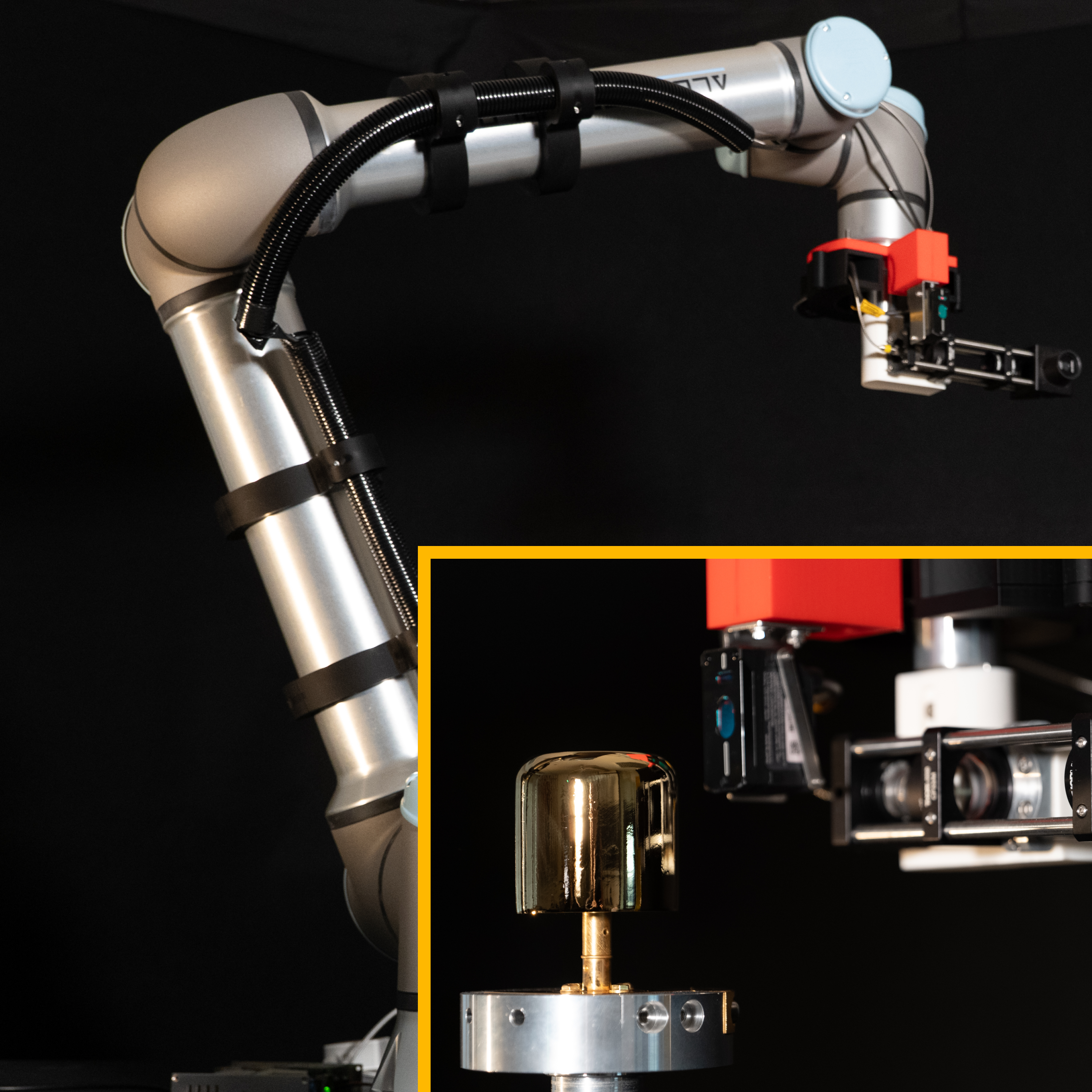Maskless 3D photolitography with Collaborative RobotsMaskless photolithography is a technique used in the manufacturing of micro and nanoscale devices, which involves the use of light to pattern and transfer a desired design onto a substratewithout the need for a physical mask. |
|
|
Technologies
|
What is maskless photolithography ?In this technique, a beam of light generated through an UV projector or a focused laser is used to selectively expose a an UV sensitive film coating a substrate to create the desired pattern. What is a cobot ?A cobot (collaborative robot) is a type of robot designed to work alongside humans in a shared workspace or to interact with humans in a safe and productive way. Unlike traditional industrial robots that are often enclosed in cages or other safety barriers, cobots are specifically designed to operate safely in close proximity to human operators, without posing a risk to their safety. Cobots can perform a variety of tasks, including assembly, packaging, inspection, and material handling, among others. Benefits of Collaborative Robots based maskless photolithography1. Increased accuracy and repeatability: Collaborative robots are extremely accurate and consistent, which is critical for photolithography. 2. Increased speed: Collaborative robots can operate much faster than human workers, allowing for increased productivity. 3. Increased safety: Collaborative robots can work alongside humans without posing a safety risk. 4. Reduced costs: Collaborative robots are more cost-effective than traditional industrial robots, making them a more attractive option for businesses. How Collaborative Robots and UV Projectors Work 1. How Collaborative Robots and UV Projectors Work To understand how collaborative robots and UV projectors work together, it is first important to understand the basics of photolithography. In short, photolithography is a process used in the semiconductor industry to create extremely small features on a substrate. This process begins with the spin coating of a photosensitive material, also known as resist, onto the surface of the wafer. Once the resist has been applied, it is then exposed to ultraviolet (UV) light using a mask or reticle that contains the desired pattern. The areas of the resist that are exposed to the UV light will become hard, while the unexposed areas will remain soft. The hard areas of the resist will then act as an etch mask during the subsequent etching step, which transfers the pattern from the reticle onto the wafer. Now that we have a basic understanding of photolithography, let's take a closer look at how collaborative robots and UV projectors can be used in this process. Collaborative robots, also known as cobots, are designed to work safely alongside humans in close proximity. This makes them ideally suited for tasks that require precise placement and movement, such as handling wafers during photolithography. Cobots are also equipped with built-in safety features that protect both workers and equipment from damage if there is an unexpected collision. UV projectors are used to expose the resist-coated Applications of Collaborative Robots and UV Projectors in Photolithography1. Applications of Collaborative Robots and UV Projectors in Photolithography: Today's advanced semiconductor manufacturing process demands ever-higher levels of accuracy and precision. In photolithography, the process of patterning features onto a semiconductor wafer using light, this is especially true. To meet these demands, manufacturers are increasingly turning to collaborative robots (cobots) and ultraviolet (UV) projectors to assist in their photolithography processes. Cobots are well-suited for photolithography applications due to their high level of dexterity and ability to work collaboratively with humans. Cobots can be used to position and align semiconductor wafers during the lithography process, ensuring that each wafer is correctly positioned for exposure. By automating these tasks, cobots can help reduce cycle times and improve overall throughput. UV projectors are another critical tool for today's photolithography processes. UV projectors use UV light to expose the pattern on a photomask onto the semiconductor wafer. This exposure creates a latent image on the wafer that can then be developed into the desired circuit pattern. The use of UV projectors allows manufacturers to create smaller features with greater precision than was possible with previous generations of lithography tools. The combination of cobots and UV projectChallenges & Limitations of Using Collaborative Robots and UV Projectors for Photolithography 1. Challenges & Limitations of Using Collaborative Robots and UV Projectors for Photolithography Despite the many benefits of using collaborative robots (cobots) and UV projectors for photolithography, there are some challenges and limitations that need to be considered. One challenge is that the use of cobots and UV projectors can increase the risk of exposure to ultraviolet (UV) radiation. This is because the projector produces a concentrated beam of UV light that can potentially damage the eyes and skin. To mitigate this risk, it is important to have proper safety precautions in place, such as wearing eye protection and using a barrier cream on exposed skin. Another challenge is that these technologies can be expensive to implement. This is especially true for small businesses or startups that may not have the budget to invest in these kinds of solutions. Additionally, training employees on how to use cobots and UV projectors properly can also add to the overall cost. Finally, it should be noted that while collaborative robots and UV projectors can offer many benefits, they are not a silver bullet solution for all photolithography needs. In some cases, traditional methods may still be necessary or more effective. As with any tool or technology, it is important to evaluate the specific needs before making a decision on which approach to take. Conclusion3D photolithography is revolutionizing the way we process and manufacture parts. By utilizing collaborative robots and UV projectors, companies are able to achieve higher accuracy with shorter lead times for their projects. Furthermore, these tools offer a cost effective solution that can be rapidly implemented into existing production lines. With its capacity to produce complex geometries and intricate detail, 3D photolithography is poised to become an invaluable asset in the manufacturing industry of tomorrow.
|
|
